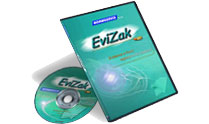Wir benötigen Ihre Einwilligung zur Verwendung der einzelnen Daten, damit Sie unter anderem Informationen zu Ihren Interessen einsehen können. Klicken Sie auf "OK", um Ihre Zustimmung zu erteilen.
ASTM E3048-16
Standard Test Method for Determination of Time to Burn-Through Using the Intermediate Scale Calorimeter (ICAL) Radiant Panel
Name übersetzen
NORM herausgegeben am 15.12.2016
Informationen über die Norm:
Bezeichnung normen: ASTM E3048-16
Anmerkung: UNGÜLTIG
Ausgabedatum normen: 15.12.2016
SKU: NS-672825
Zahl der Seiten: 5
Gewicht ca.: 15 g (0.03 Pfund)
Land: Amerikanische technische Norm
Kategorie: Technische Normen ASTM
Kategorie - ähnliche Normen:
Ignitability and burning behaviour of materials and products
Die Annotation des Normtextes ASTM E3048-16 :
Keywords:
burn-through, effective specific heat, effective thermal conductivity, emissivity, ICAL, ignitability, intermediate scale calorimeter, surface temperature, sustained ignition,, ICS Number Code 13.220.40 (Ignitability and burning behaviour of materials and products)
Ergänzende Informationen
| Significance and Use | ||||||||||||
|
5.1 This test method is used primarily to determine the time to burn-through and the time to ignition of materials, products, and assemblies. 5.2 Representative joints and other characteristics of an assembly shall be included in a specimen when these details are part of normal design. 5.3 This test method is applicable to end-use products not having an ideally planar external surface. The heat flux shall be adjusted to be that which is desired at the average distance of the surface from the radiant panel. 5.4 In this procedure, the specimens are subjected to one or more specific sets of laboratory test conditions. If different test conditions are substituted or the end-use conditions are changed, it is not always possible by or from this test to predict changes in the fire-test-response characteristics measured. Therefore, the results are valid only for the fire test exposure conditions described in this procedure. 5.5 Representative materials and thicknesses shall be included in a specimen when these details are part of normal design. 5.6 This method can also be used for research and development of various material types to be included in larger-scale fire test assemblies (for example, Test Methods E119). 5.7 Test Limitations: 5.7.1 The test results have limited validity if: (5.7.2 Report observations of specimens that sag, deform, or delaminate. |
||||||||||||
| 1. Scope | ||||||||||||
|
1.1 This fire-test-response test method assesses the response of materials, products, and assemblies to controlled levels of heat flux with an external igniter. 1.2 The fire-test-response characteristics determined by this test method include the ignitability and time to burn-through of materials, products, and assemblies under well ventilated conditions. 1.3 Heat, smoke, and mass loss rate are not within the scope of this test method, but are addressed by Test Method E1623. 1.3.1 This test method uses the same burner as that described in Test Method E1623. Two burner types are described (Burner A and Burner B). 1.4 Specimens are exposed to a constant heat flux up to 50 kW/m2 in a vertical orientation. Hot wires are used to ignite the combustible vapors from the specimen. 1.5 This test method has been developed for evaluations, design, or research and development of materials, products, or assemblies, or for code compliance. The specimen shall be tested in thicknesses and configurations representative of actual end product or system uses. 1.6 Limitations of the test method are listed in 5.7. 1.7 This test method is used to measure and describe the response of materials, products, or assemblies to heat and flame under controlled conditions, but does not by itself incorporate all factors required for fire hazard or fire risk assessment of the materials, products, or assemblies under actual fire conditions. 1.8 Fire testing is inherently hazardous. Adequate safeguards for personnel and property shall be employed in conducting these tests. 1.9 The values stated in SI units are to be regarded as standard. 1.10 This standard does not purport to address all of the safety concerns, if any, associated with its use. It is the responsibility of the user of this standard to establish appropriate safety and health practices and determine the applicability of regulatory limitations prior to use. Specific information about hazards is given in Section 7. |
||||||||||||
| 2. Referenced Documents | ||||||||||||
|
Empfehlungen:
EEviZak – alle Gesetze einschließlich ihrer Evidenz in einer Stelle
Bereitstellung von aktuellen Informationen über legislative Vorschriften in der Sammlung der Gesetze bis zum Jahr 1945.
Aktualisierung 2x pro Monat!
Brauchen Sie mehr Informationen? Sehen Sie sich diese Seite an.




 Cookies
Cookies
